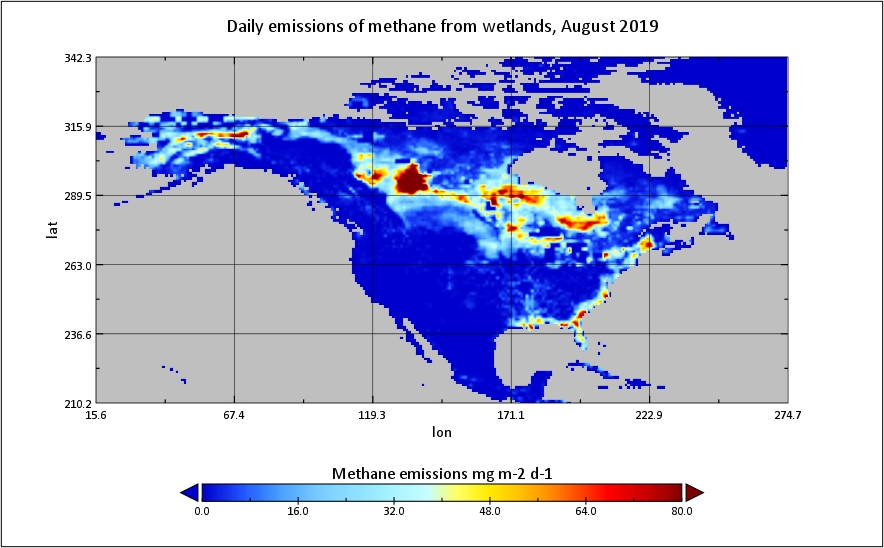The ORNL DAAC recently released the following new Carbon Monitoring System (CMS) dataset by Raczka, B.M., et al. (2021):
CMS: Global 0.5-deg Wetland Methane Emissions and Uncertainty (WetCHARTs v1.3.1)
This dataset provides global monthly wetland methane (CH4) emissions estimates at 0.5 by 0.5-degree resolution for the period 2001-2019 that were derived from an ensemble of multiple terrestrial biosphere models, wetland extent scenarios, and CH4:C temperature dependencies that encompass the main sources of uncertainty in wetland CH4 emissions. There are 18 model configurations. WetCHARTs v1.3.1 is an updated product of WetCHARTs v1.0 Extended Ensemble. Three new features in the updated version include (1) updated model output data to 2019, (2) model drivers are ERA5 reanalysis data, and (3) adjusted extent definitions for Global Lakes and Wetlands Database (GLWD) categories. The intended use of this product is as a process-informed wetland CH4 emission data set for atmospheric chemistry and transport modeling. Users can compare estimates by model configuration to explore variability and sensitivity with respect to ensemble members
The NASA CMS program is designed to make significant contributions in characterizing, quantifying, understanding, and predicting the evolution of global carbon sources and sinks through improved monitoring of carbon stocks and fluxes. NASA satellite observations and modeling/analysis capabilities are used to establish the accuracy, quantitative uncertainties, and utility of products for supporting national and international policy, regulatory, and management activities. CMS data products are designed to inform near-term policy development and planning.
Additional data from CMS and other relevant links can be found on the ORNL DAAC's CMS Project Page.
Citation: Bloom, A.A., K.W. Bowman, M. Lee, A.J. Turner, R. Schroeder, J.R. Worden, R.J. Weidner, K.C. McDonald, and D.J. Jacob. 2021. CMS: Global 0.5-deg Wetland Methane Emissions and Uncertainty (WetCHARTs v1.3.1). ORNL DAAC, Oak Ridge, Tennessee, USA. https://doi.org/10.3334/ORNLDAAC/1915

